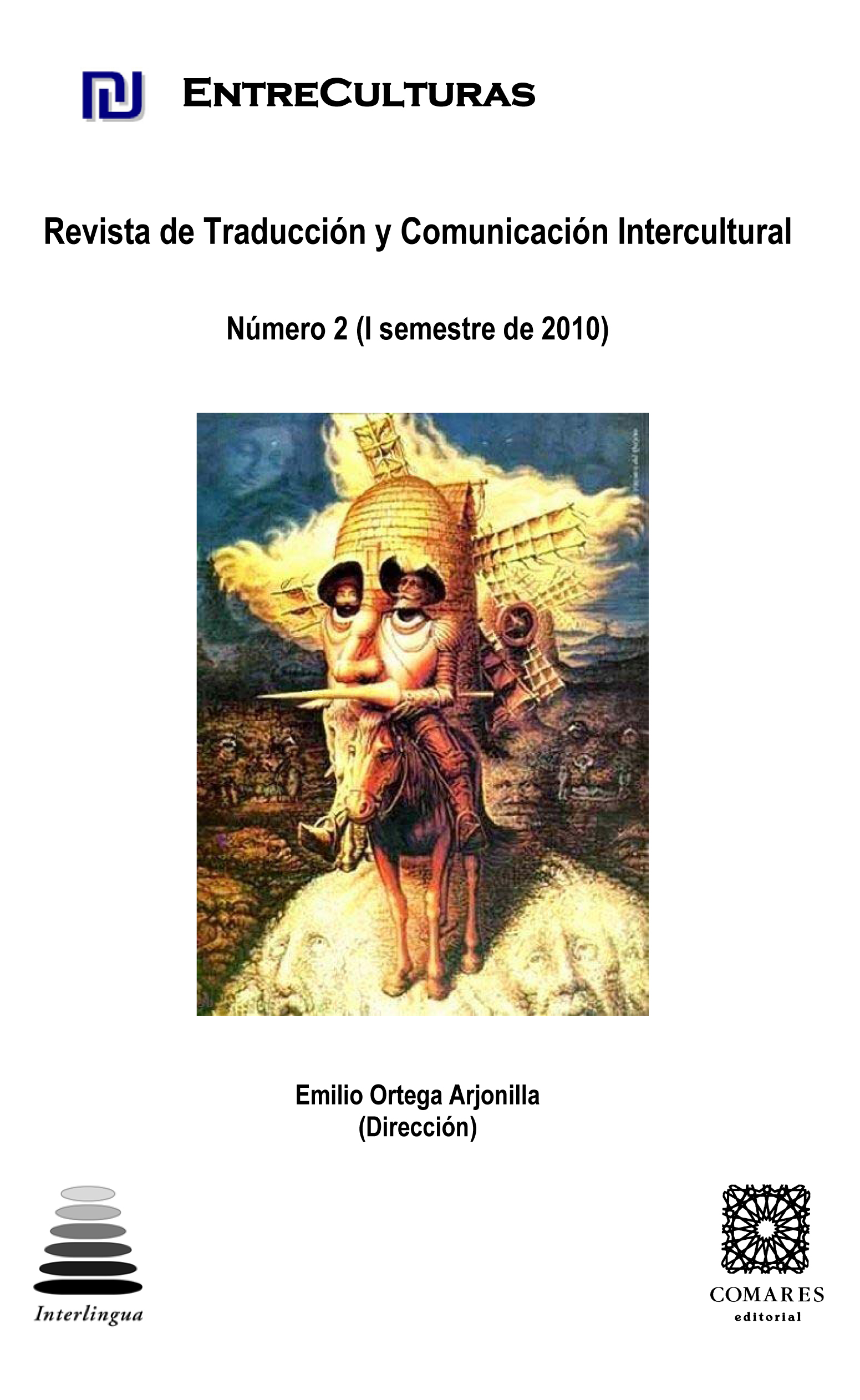ANÁLISIS Y PROPUESTA DE TRADUCCIÓN DEL DIALECTO EN CUMBRES BORRASCOSAS
DOI:
https://doi.org/10.24310/Entreculturasertci.vi2.11763Keywords:
literary translation, English literature, language variation, translation strategies, dialectsAbstract
The work aims to study the translation of the dialect in Emily Brontë’s novel Wuthering Heights. Language variation stands as one of the problems of the theory and practice of Translation Studies. After considering the traditional handling of it, this study intends to render an alternative version of the dialect’s translation. In order to achieve this, an analysis of the literature on language variation and the function of the novel’s dialect will be made.
Downloads
Metrics
References
CATFORD, John C. (1965): A Linguistic Theory of Translantion. Londres, Oxford University Press.
GRICE, Paul (1989): Studies in the Way of Words. Cambridge, Harvard University Press.
HATIM, Basil y MASON, Ian (1995): Teoría de la traducción. Una aproximación al discurso. Barcelona, Ariel.
— (1997): Translator as Communicator. Londres, Routledge.
— (2004): Translation. An Advanced Resource Book. Londres, Routledge.
HURTADO ALBIR, Amparo (2001): Traducción y Traductología. Introducción a la Traductología. Madrid, Cátedra.
JULIÀ BALLBÈ, Josep (1997b): «Dialectes i traducció: reticències i aberracions», en Bacardí, M. (ed.): Actes del II Congrès Internacional sobre Traducció, Abril 1994, Bellaterra, Servei de Publicacions de la Universitat Autónoma de Barcelona, 561-574.
MARCO BORILLO, Josep (2002): El fil d’Ariadna. Anàlisi estilística i traducció literària. Barcelona, Eumo.
MAYORAL ASENSIO, Roberto (1999): La traducción de la variación lingu?ística. Monográficos de la revista Hermeneus, n.º 1, Soria, Diputación Provincial de Soria.
— (1997): La traducción de la variación lingu?ística. Tesis doctoral de la Universidad de Granada. [En línea] http://www.robertomayoral.es/ [Consulta: del 4 al 17 de julio de 2008].
MUÑOZ MARTÍN, Ricardo (1995): Lingu?ística para traducir. Barcelona, Teide.
NEWMARK, Peter (1988): A Textbook of Translation. Londres, Prentice Hall.
SLOBODNÍK, Dusan (1970): «Remarques sur la traduction des dialectes» en Holmes, J. (ed.): The Nature of Translation, Essays on the Theory and Practice of Literary Translation. Bratislava, Publishing House of the Slovak Academy of Sciences, 139-143.
OBRAS DE REFERENCIA SOBRE CUMBRES BORRASCOSAS
BRONTË, Emily (1847): Wuthering Heights (ed. de Charlotte Brontë, 1850). Londres, Penguin Books.
— (1970): Cumbres borrascosas. Traducción de E. Reguera. Barcelona, Rodegar.
— (2005): Cumbres borrascosas. Traducción de Carmen Martín Gaite Barcelona, Debolsillo.
CHAMBERS, Jack K. y TRUDGILL, Peter (1980): Dialectology. Cambridge, Cambridge University Press.
FERGUSON, Susan L. (1998): «Drawing fictional lines: dialect and narrative in the Victorian novel» BNET Business Network. Portal de noticias y recursos económico-empresariales. Disponible en: http://findarticles.com/p/articles/mi_m2342/is_1_32/ai_54019319/pg_ 3 [Consulta: 28 de junio de 2008].
PETYT, K. Malcolm (1970): Emily Brontë and the Haworth Dialect: A Study of the Dialect Speech in “Wuthering Heights”. Menston, Yorkshire Dialect Society.
WADDINGTON-FEATHER, John J. (1965): «Emily Brontë’s Use of Dialect in Wuthering Heights», en Transactions, 1966, revista de la Yorkshire Dialect Society, pp. 12-19.
WALLES, Katie. (2006): Northern English. A Cultural and Social History. Cambridge, Cambridge University Press.
WELLS, John C. (1982): Accents of English 2: The British Isles. Cambridge, CambridgeUniversity Press. Yorkshire Dialect Website [en línea] http://www.yorkshiredialect.com/Consulta: 1 de julio de 2008].
Downloads
Published
How to Cite
Issue
Section
License
All contents published in Entre culturas. Revista de traducción y comunicación intercultural are protected under the Creative Commons Attribution-NonCommercial-ShareAlike 4.0 International (CC BY-NC-SA 4.0) license. All about this license is available in the following link: <http://creativecommons.org/licenses/by-nc-sa/4.0>
Users can copy, use, redistribute, share and exhibit publicly as long as:
- The original source and authorship of the material are cited (Journal, Publisher and URL of the work).
- It is not used for comercial purposes.
- The existence of the license and its especifications are mentioned.
There are two sets of authors’ rights: moral and property rights. Moral rights are perpetual prerogatives, unrenounceable, not-transferable, unalienable, imprescriptible and inembargable. According to authors’ rights legislation, Entreculturas. Revista de traducción y comunicación intercultural recognizes and respects authors moral rights, as well as the ownership of property rights, which will be transferred to University of Malaga in open access. The property rights are referred to the benefits that are gained by the use or the dissemination of works. Entreculturas. Revista de traducción y comunicación intercultural is published in an open access form and it is exclusively licenced by any means for doing or authorising distribution, dissemination, reproduction, , adaptation, translation or arrangement of works.
Authors are responsable for obtaining the necessary permission to use copyrighted images.





7.png)
